#forest-based industries
Text
United Kingdom: All-Party Parliamentary Group on Forestry and Tree Planting meeting.
The UK parliament will hold a breakfast meeting on 21 March at 8:30 am (GMT) in the Churchill Room. Forestry Minister Trudy Harrison MP will set out how a new relationship between the government and UK forest-based industries can create a domestic partnership with international impact. Friends of the Earth, Confor and the Food, Farming and Countryside Commission will discuss how more domestic tree planting can support net zero objectives, stimulate rural economies and help protect forests overseas. Attendees will also hear about the upcoming launch of the National Wood Strategy for England.
0 notes
Text
What Is The Size Of The Forest Products Industry In India?
The forest products industry in India is diverse and plays a crucial role in the country's economy. Numerous manufacturers are producing a wide range of products derived from forest resources.
The forest products industry involves the production of goods and services derived from forest resources. And this crucial sector includes both timber and non-timber products. This industry plays an important role in the growth and development of the economy as it has a significant impact on rural communities and the environment.
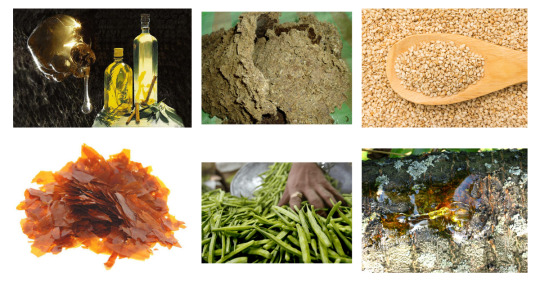
Classification Of Forest Produce
1. Timber products
This includes sawn timber, plywood, veneers, and other wood-based products derived from forests. These products have wide applications in construction, furniture, and interior design manufacturing
2. Paper products
Paper is needed for the publishing industry and includes newsprint, printing paper, tissue paper, packaging, and other products made from wood pulp. These products have wide applications in both residential and commercial sectors.
3. Non-timber forest products (NTFPs)
It includes a wide range of products derived from forest resources other than timber. Examples include rubber, resin, honey, nuts, mushrooms, and medicinal plants. There could be more products available depending on location and environment.
Bioenergy: Forests are a crucial source of bioenergy, including wood pellets, chips, and other biomass products used to generate electricity, heat buildings, and fuel vehicles.
India has a diverse range of forests that are home to a variety of tree species, many of which are used for different forest products. Some of the important forest products in India include the following:
Timber: India has several timber species that are used for furniture, construction, and other purposes. Some popular timber species include teak, rosewood, sal, deodar, sandalwood, and bamboo. The country has vast reserves of forests that provide quality timber.
Medicinal plants: India has a rich tradition of using medicinal plants for healthcare. Many of these plants are found in the forests and are used to produce medicines, herbal teas, and other health products. In addition, they are used to flavor cosmetics and health foods as nutritional supplements.
Non-timber forest products (NTFPs): NTFPs are products that are derived from forest resources other than timber. Some examples of NTFPs in India include honey, beeswax, bamboo shoots, mushrooms, and various spices. These products are in great demand in both domestic and global markets.
Paper: India has a large paper industry that relies on wood pulp for paper production. The country has several paper mills that use different types of wood for paper production. It has a significant contribution to the country's economy.
Rubber: India is one of the major producers of natural rubber, which is extracted from rubber trees found in forest areas. Rubber is used for various purposes in different industries.
Fruits and nuts: Many forest areas in India are home to mixed fruit and nut trees such as mango, jackfruit, cashew, and walnut. These products have generated huge demand in both domestic and global markets.
Lac: Lac is a resinous substance secreted by an insect and used in the production of shellac, which is used in making varnish, wax, and other products. India is one of the major producers of lac in the world. Also, the country has initiated a special program to promote lac farming.

Government Initiative
The government formed Shellac Export Promotion Council (SEPC) in 1956 to promote the export of shellac and shellac-based products. Shellac is a resinous substance that is secreted by the female lac bug and is used in the production of various products, including varnishes, food glazes, and pharmaceuticals.
The SEPC is responsible for promoting the export of shellac and shellac-based products and providing support to shellac manufacturers and exporters. The council works closely with government agencies, industry associations, and other stakeholders to promote the use of shellac in various industries and to increase its export potential.
The Shellac Export Promotion Council works to create awareness about Indian shellac and forest products in the international market by organizing trade fairs, buyer-seller meets, and exhibitions. It also provides various kinds of assistance to exporters, such as information on market trends, opportunities, and regulatory requirements.
The SEPC is crucial in promoting and supporting the export of shellac and other forest products from India. Its various activities and initiatives help to increase the demand for Indian products and enhance the competitiveness of Indian exporters in the international market.
India has a thriving forest sector, with numerous manufacturers producing various products derived from forest resources. Some of the big forest products manufacturers in India include:
Greenply Industries: Greenply is one of the largest producers of plywood and other wood-based products in India. The company operates several manufacturing facilities across the country and offers a range of products, including plywood, veneers, and laminates.
Century Plyboards: Century Plyboards is another major player in the Indian Plywood industry, producing a wide range of plywood, veneers, and laminates. The company also operates a manufacturing facility that produces particleboard and MDF.
Dabur India: Dabur is a well-known Indian company that produces a range of ayurvedic and herbal products, including those derived from forest resources. The company is a major producer of honey, which is sourced from forest areas.
TTK Prestige: TTK Prestige is a manufacturer of kitchen appliances, including cookware and other products made from non-timber forest products like bamboo. The company sources bamboo from sustainable plantations and supports local communities through its operations.
Godrej and Boyce: Godrej and Boyce is a diversified company with operations in various sectors, including forest goods. The company produces a wide range of furniture, including those made from timber and other materials.
Cello Industries: Cello Industries is a manufacturer of plastic and composite products, including those made from bamboo composite. One of the most important forest-based industries, the company sources bamboo from sustainable plantations and produces a range of products, including furniture, flooring, and other items.
#forest-based industries#forest#forest products#forest products manufacturers#forest products industry#forest products in India#Indian forest
0 notes
Text
I'll say it: "Oh all AI artists do is write a stupid description and immediately get an image with no effort, there's no art in that" is the new "Digital painting doesn't count as art because it takes no effort"
#Look I'm aware there're moral reasons to criticize AI art such as how corporations will use it#and the fact lots of models (not all however) use stolen content#But all you have to do is visit a forum dedicated to AI art to quickly realize it actually takes some effort to make quality images#And honestly from what I've seen those guys are often very respectful of traditional artists if not traditional artists themselves#Not a single bit of 'haha those idiots are working hard when they could simply use AI!' that Tumblr likes to strawman them as#Lots of 'So I did the base with AI and then painted over it manually in Photoshop' and 'I trained this model myself with my own drawings'#And I'm not saying there aren't some guys that are being assholes over it on Twitter#But when you go to an actual community dedicated to it. Honestly these guys are rather nice#I've seen some truly astounding projects#like there was this guy that was using people's scars to create maps of forests and mointains to sort of explore the theme of healing#And this one that took videos of his city and overlayed them with some solarpunk kind of thing#And this one that was doing a collection of dreams that was half AI amd half traditional painting#Anyway the point is you guys are being way too mean to a group of people that genuinely want to use the technology to create cool art#And while I'm aware there are issues related to its use#it's actually really fucked up you're attacking the individual artists instead of corporations???#It's as if you were attacking the chocolate guy over the systemic problems related to the chocolate industry!#And also tumblrs always like 'Oh AI is disgusting I hate AI art so I'll just hate in it without dealing with the issue'#While AI art forums often have posts with people discussing how go use it ethically when applied to commercial use!!#Honestly these guys are doing way more about tackling the issue than tumblr and you should feel bad!!!
15 notes
·
View notes
Text
now that i’ve found out people are still making slenderverse series i really want to make my own based on the whole brian “nature documentary” jokes except i live in california so it’s nothing but fields of dead grass
the protagonist really wants to make an interesting nature documentary but for whatever reason they’re not allowed to travel out of state so they just sell their soul to slenderman for their dumbass nature documentary
#slenderverse#marble hornets#mh#based on my lifelong sadness of not living near any forests#most forests in the us are apparently on the east coast i think#it’ll be a commentary on urbanism industrialism and colonialism bc why not#genuinely want to make this actually
9 notes
·
View notes
Text
Genocide experts warn that India is about to genocide the Shompen people
Who are the Shompen?
The Shompen are an indigenous culture that lives in the Great Nicobar Island, which is nowadays owned by India. The Shompen and their ancestors are believed to have been living in this island for around 10,000 years. Like other tribes in the nearby islands, the Shompen are isolated from the rest of the world, as they chose to be left alone, with the exception of a few members who occasionally take part in exchanges with foreigners and go on quarantine before returning to their tribe. There are between 100 and 400 Shompen people, who are hunter-gatherers and nomadic agricultors and rely on their island's rainforest for survival.

Why is there risk of genocide?
India has announced a huge construction mega-project that will completely change the Great Nicobar Island to turn it into "the Hong Kong of India".
Nowadays, the island has 8,500 inhabitants, and over 95% of its surface is made up of national parks, protected forests and tribal reserve areas. Much of the island is covered by the Great Nicobar Biosphere Reserve, described by UNESCO as covering “unique and threatened tropical evergreen forest ecosystems. It is home to very rich ecosystems, including 650 species of angiosperms, ferns, gymnosperms, and bryophytes, among others. In terms of fauna, there are over 1800 species, some of which are endemic to this area. It has one of the best-preserved tropical rain forests in the world.”
The Indian project aims to destroy this natural environment to create an international shipping terminal with the capacity to handle 14.2 million TEUs (unit of cargo capacity), an international airport that will handle a peak hour traffic of 4,000 passengers and that will be used as a joint civilian-military airport under the control of the Indian Navy, a gas and solar power plant, a military base, an industrial park, and townships aimed at bringing in tourism, including commercial, industrial and residential zones as well as other tourism-related activities.
This project means the destruction of the island's pristine rainforests, as it involves cutting down over 852,000 trees and endangers the local fauna such as leatherback turtles, saltwater crocodiles, Nicobar crab-eating macaque and migratory birds. The erosion resulting from deforestation will be huge in this highly-seismic area. Experts also warn about the effects that this project will have on local flora and fauna as a result of pollution from the terminal project, coastal surface runoff, ballasts from ships, physical collisions with ships, coastal construction, oil spills, etc.
The indigenous people are not only affected because their environment and food source will be destroyed. On top of this, the demographic change will be a catastrophe for them. After the creation of this project, the Great Nicobar Island -which now has 8,500 inhabitants- will receive a population of 650,000 settlers. Remember that the Shompen and Nicobarese people who live on this island are isolated, which means they do not have an immune system that can resist outsider illnesses. Academics believe they could die of disease if they come in contact with outsiders (think of the arrival of Europeans to the Americas after Christopher Columbus and the way that common European illnesses were lethal for indigenous Americans with no immunization against them).
And on top of all of this, the project might destroy the environment and the indigenous people just to turn out to be useless and sooner or later be abandoned. The naturalist Uday Mondal explains that “after all the destruction, the financial viability of the project remains questionable as all the construction material will have to be shipped to this remote island and it will have to compete with already well-established ports.” However, this project is important to India because they want to use the island as a military and commercial post to stop China's expansion in the region, since the Nicobar islands are located on one of the world's busiest sea routes.
Last year, 70 former government officials and ambassadors wrote to the Indian president saying the project would “virtually destroy the unique ecology of this island and the habitat of vulnerable tribal groups”. India's response has been to say that the indigenous tribes will be relocated "if needed", but that doesn't solve the problem. As a spokesperson for human rights group Survival International said: “The Shompen are nomadic and have clearly defined territories. Four of their semi-permanent settlements are set to be directly devastated by the project, along with their southern hunting and foraging territories. The Shompen will undoubtedly try to move away from the area destroyed, but there will be little space for them to go. To avoid a genocide, this deadly mega-project must be scrapped.”
On 7 February 2024, 39 scholars from 13 countries published an open letter to the Indian president warning that “If the project goes ahead, even in a limited form, we believe it will be a death sentence for the Shompen, tantamount to the international crime of genocide.”
How to help
The NGO Survival International has launched this campaign:
From this site, you just need to add your name and email and you will send an email to India's Tribal Affairs Minister and to the companies currently vying to build the first stage of the project.
Share it with your friends and acquittances and on social media.
Sources:
India’s plan for untouched Nicobar isles will be ‘death sentence’ for isolated tribe, 7 Feb 2024. The Guardian.
‘It will destroy them’: Indian mega-development could cause ‘genocide’ and ‘ecocide’, says charity, 8 Feb 2024. Geographical.
Genocide experts call on India's government to scrap the Great Nicobar mega-project, Feb 2024. Survival International.
The container terminal that could sink the Great Nicobar Island, 20 July 2022. Mongabay.
[Maps] Environmental path cleared for Great Nicobar mega project, 10 Oct 2022. Mongabay.
#shompen#genocide#stop genocide#india#indigenous#indigenous peoples#indigenous rights#human rights#anthropology#stateless nations#end occupation#andaman and nicobar islands#nicobar islands#great nicobar#💬#asia#geopolitics#ecocide#sustainability
22K notes
·
View notes
Text
Engineering solutions Sydney-Industrial equipment maintenance Sydney

https://sparkyservices.com.au/
Engineering solutions Sydney-Industrial equipment maintenance Sydney
Request references from the companies to get in touch with their past or existing clients. Speaking directly to their clients can give you a better understanding of their service quality and reliability.
#Engineering solutions Sydney#Industrial equipment maintenance Sydney#Industrial automation solutions Sydney#Factory relocation services Yowie Bay#Industrial automation Berowra Heights#Skill Engineering Hire Lovett Bay#Machine Relocating Kurnell#Turn Key Automation Duffys Forest#Base Electrical Grays Point#Thermal scan Oxford Falls#Shift coverage Sydney#Thermal scan Sydney
1 note
·
View note
Text
The World's Forests Are Doing Much Better Than We Think
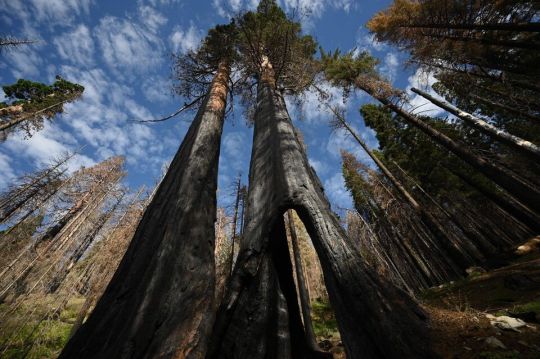
You might be surprised to discover... that many of the world’s woodlands are in a surprisingly good condition. The destruction of tropical forests gets so much (justified) attention that we’re at risk of missing how much progress we’re making in cooler climates.
That’s a mistake. The slow recovery of temperate and polar forests won’t be enough to offset global warming, without radical reductions in carbon emissions. Even so, it’s evidence that we’re capable of reversing the damage from the oldest form of human-induced climate change — and can do the same again.
Take England. Forest coverage now is greater than at any time since the Black Death nearly 700 years ago, with some 1.33 million hectares of the country covered in woodlands. The UK as a whole has nearly three times as much forest as it did at the start of the 20th century.
That’s not by a long way the most impressive performance. China’s forests have increased by about 607,000 square kilometers since 1992, a region the size of Ukraine. The European Union has added an area equivalent to Cambodia to its woodlands, while the US and India have together planted forests that would cover Bangladesh in an unbroken canopy of leaves.
Logging in the tropics means that the world as a whole is still losing trees. Brazil alone removed enough woodland since 1992 to counteract all the growth in China, the EU and US put together. Even so, the planet’s forests as a whole may no longer be contributing to the warming of the planet. On net, they probably sucked about 200 million metric tons of carbon dioxide from the atmosphere each year between 2011 and 2020, according to a 2021 study. The CO2 taken up by trees narrowly exceeded the amount released by deforestation. That’s a drop in the ocean next to the 53.8 billion tons of greenhouse gases emitted in 2022 — but it’s a sign that not every climate indicator is pointing toward doom...
More than a quarter of Japan is covered with planted forests that in many cases are so old they’re barely recognized as such. Forest cover reached its lowest extent during World War II, when trees were felled by the million to provide fuel for a resource-poor nation’s war machine. Akita prefecture in the north of Honshu island was so denuded in the early 19th century that it needed to import firewood. These days, its lush woodlands are a major draw for tourists.
It’s a similar picture in Scandinavia and Central Europe, where the spread of forests onto unproductive agricultural land, combined with the decline of wood-based industries and better management of remaining stands, has resulted in extensive regrowth since the mid-20th century. Forests cover about 15% of Denmark, compared to 2% to 3% at the start of the 19th century.
Even tropical deforestation has slowed drastically since the 1990s, possibly because the rise of plantation timber is cutting the need to clear primary forests. Still, political incentives to turn a blind eye to logging, combined with historically high prices for products grown and mined on cleared tropical woodlands such as soybeans, palm oil and nickel, mean that recent gains are fragile.
There’s no cause for complacency in any of this. The carbon benefits from forests aren’t sufficient to offset more than a sliver of our greenhouse pollution. The idea that they’ll be sufficient to cancel out gross emissions and get the world to net zero by the middle of this century depends on extraordinarily optimistic assumptions on both sides of the equation.
Still, we should celebrate our success in slowing a pattern of human deforestation that’s been going on for nearly 100,000 years. Nothing about the damage we do to our planet is inevitable. With effort, it may even be reversible.
-via Bloomburg, January 28, 2024
#deforestation#forest#woodland#tropical rainforest#trees#trees and forests#united states#china#india#denmark#eu#european union#uk#england#climate change#sustainability#logging#environment#ecology#conservation#ecosystem#greenhouse gasses#carbon emissions#climate crisis#climate action#good news#hope
3K notes
·
View notes
Text
So Disco Elysium is the only game you've ever really liked
I get it! It's a phenomenal game with superb art and writing, and its themes are consistent and deeply explored. It sets a high bar for video games. But there are other really, really fantastic games out there. This is a list that is 100% my own taste of things that aren't necessarily similar, other than the fact that they're really fucking good. (A lot of these are on sale for the Steam Summer Sale until July 11 2024!)
In Stars and Time

In Stars and Time is a time loop game where you play as Siffrin, the rogue of a party at the end of their quest to save the day by defeating the King, who is freezing everybody in time! But something is wrong: every time you die, you loop back to the day before you fight the King. You're the only one who remembers the loops, so it's up to you to figure out why it's happening, and how to break out.
In Stars and Time is a heart-wrenching dive into mental health, friendship, and love. It's about feeling alone, and how awful it is when the people who love you don't notice (and how awful it is when they do). It's about falling deeper and deeper into your worst self and your worst tendencies, and how to come back from it.
The creator also did one of my favorite Disco Elysium comics ever, which is only tangentially relevant but worth mentioning.
Roadwarden

In Roadwarden, you play as the titular Roadwarden for an undeveloped and "wild" part of the kingdom. Monsters roam the forests and roads, and it's your job to keep people safe. On paper, anyway. Your real mission is to find out what is of value in the area, and how to take it from its people. How well you perform this task is up to you. It's an oldschool text-based RPG, and I take a lot of notes by hand when I play.
Roadwarden explores exploitation and industrialization by making you look in the face of your potential victims. You can only learn what your bosses want you to report on by getting close to the residents, after all. There are mysteries to be solved, secrets to be gathered, and hearts to win.
The Longing

The Longing is an adventure-idle game where you play as the solitary servant of a sleeping king. Your task is to wait for him, for four hundred days. Time in the game passes in realtime (for the most part). There are caves to explore, books to be read, and drawings to make.
The Longing is about loneliness and depression. It's about whether or not you decide to stay in that hole, and if you do, what you do with yourself while you're there. Maybe you'll wander. Maybe you'll stare at a wall. Maybe you'll just sleep until it's all over.
Papers, Please

Papers, Please casts you as a newly hired customs officer in a country that is rapidly tightening its borders as its fascist government tightens its fist. This game is stressful. Sometimes you intend to help out the revolutionaries when they asked, but then you got so stressed out trying to make your quota so you can feed your family and pay your bills that you didn't notice the name of the person they were hoping to contact while going through their papers. Sometimes someone puts a bomb in front of you and expects you to defuse it. Sometimes someone suggests you steal people's passports so you can get your family out, and with the horror you see daily, the idea tempts you more than you'd like.
Papers, Please is all about hard choices and testing your moral fortitude. Everything you do has consequences. Being a good person in this game is hardly ever rewarded, but not in a way that feels overly cynical. Papers, Please asks you what kind of person you want to be and what you're willing to sacrifice to get there.
The Return of the Obra Dinn
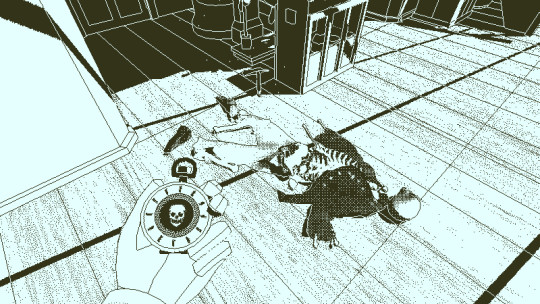
From the creator of Papers, Please, The Return of the Obra Dinn is a game where you play as an insurance investigator for the East India Trading Company. The ship the Obra Dinn has just floated back into port, its entire crew missing or dead. It's your job to figure out what happened aboard the vessel. For insurance reasons.
I don't know how to go into the themes of this too deeply without giving away too much, but the mechanics of the game itself make the game worth playing. You have a magic stopwatch that allows you to go back to the moment of a person's death, allowing you to try and figure out who (or what) killed them, and how. And the soundtrack is extremely good.
Outer Wilds

In Outer Wilds you play as an unnamed alien, and it's your first day going to space! Your planet's space program is pretty new still, so there's still lots to explore and discover on the planets within your system. There are ancient ruins from a mysterious race that once lived in your system, long before your species began to record history. Why were they here? Where did they go? How are they connected to the weird thing that keeps happening to you?
The fun of Outer Wilds is in the discovery and answering your own questions. The game never tells you where to go, and it never outright tells you anything. There are clues scattered through the system, and it's up to you to put them together and figure out your next steps. It's about the way that life always goes on, no matter what, even when it seems like the end of everything, forever. I'd recommend NOT reading anything else about this game. Just go play it. Seriously, the less you know, the more fun this is.
If on a Winter's Night, Four Travelers

In If on a Winter's Night, Four Travelers, you explore the circumstances of the deaths of four individuals.
This is a short one that took me about two and a half hours to play. If for no other reason, play it for the stunning pixel art. The game explores sexism, racism, and homophobia in the Victorian era and leans heavily into horror themes. Best of all: it's completely free!
Pentiment
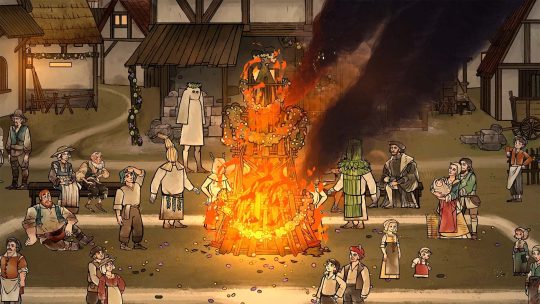
Pentiment takes you to the 16th century, where you take the role of Andreas Maler, a journeyman artist working on his masterwork in the scriptorium of an abbey. When someone is murdered, Andreas takes responsibility for finding the culprit.
The game is set over 20~ years and you get to watch how Andreas' actions affect the village in various ways (who's alive the next time you come by, have people gotten married and had children...). It's an exploration of how the past affects the future, and what parts of that past we choose to keep or discard. It has beautiful art, and fans of both Disco and Pentiment often compare them.

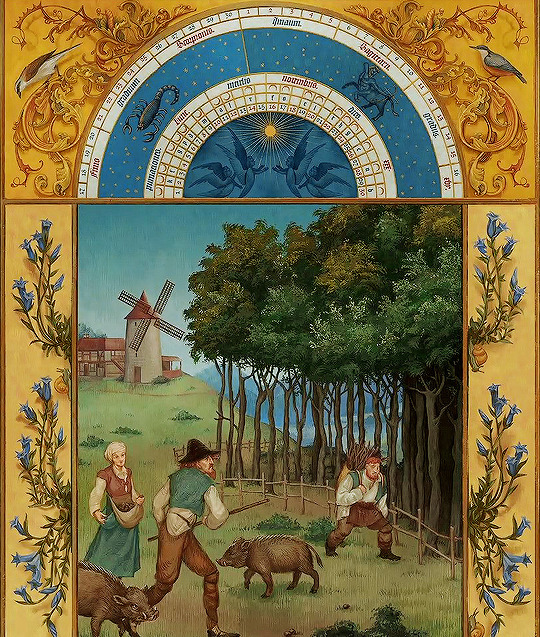
Other games you might wanna check out
Night in the Woods, Dredge, Oxenfree, A House of Many Doors, Inscryption, Slay the Princess, Citizen Sleeper, Chants of Sennar, Loop Hero, The Cosmic Wheel Sisterhood, The Pale Beyond, Where the Water Tastes Like Wine, Elsinore, Her Story, Before Your Eyes, Pathologic (not delved into above because the venn diagram of Pathologic fans and Disco fans is basically a circle)
#disco elysium#pentiment#outer wilds#in stars and time#roadwarden#if on a winters night four travelers#papers please#the return of the obra dinn#the longing#video games#hoping so badly there are no glaring errors in this#made this because i have spoken to many people who Dont Play video games but liked disco
1K notes
·
View notes
Text
Collagen craze drives deforestation and rights abuses
For the first time an investigation has linked collagen powder to violence against Indigenous peoples in Brazilian forests

The stench arrives before the lorries do. They are carrying skins that were stripped from cattle carcasses days ago. Flies are everywhere.
The lorries’ destination is Amparo, a small industrial town in São Paulo state, southeastern Brazil. Here, Rousselot, a company owned by the Texan business Darling Ingredients, extracts collagen – the active ingredient in health supplements at the centre of a global wellness craze.
But while collagen’s most evangelical users claim the protein can improve hair, skin, nails and joints, slowing the ageing process, it has a dubious effect on the health of the planet. Collagen can be extracted from fish, pig and cattle skin, but behind the wildly popular “bovine” variety in particular lies an opaque industry driving the destruction of tropical forests and fuelling violence and human rights abuses in the Brazilian Amazon.
An investigation by the Bureau of Investigative Journalism, the Guardian, ITV and O Joio e O Trigo has found that tens of thousands of cattle raised on farms damaging tropical forests were processed at abattoirs connected to international collagen supply chains.
Some of this collagen can be traced all the way to Nestlé-owned Vital Proteins, a major producer of collagen supplements championed by the actress Jennifer Aniston. Vital Proteins is sold globally – including online on Amazon, in Walmart stores in the US, in Holland & Barrett and Boots in the UK and in Costco in both countries.
The investigation – the first to connect bovine collagen with tropical forest loss and violence against Indigenous peoples – found at least 2,600 sq km of deforestation linked to the supply chains of two Brazil-based collagen operations with connections to Darling: Rousselot and Gelnex, which is in the process of being acquired by Darling for $1.2bn. It is unclear how much of this deforestation, which was calculated by the Center for Climate Crime Analysis, is linked to Vital Proteins.
Continue reading.
#brazil#politics#brazilian politics#environmental justice#environmentalism#indigenous rights#beauty industry#mod nise da silveira#image description in alt
6K notes
·
View notes
Text
Good News - May 22-28
Like these weekly compilations? Support me on Ko-fi or $Kaybarr1735! Also, if you tip me on Ko-fi or CashApp (and give me some way to contact you if it doesn’t automatically), at the end of the month I'll send you a link to all of the articles I found but didn't use each week - almost double the content!
1. Scientists Invent Healthier More Sustainable Chocolate

“The new chocolate recipe from researchers at ETH Zurich uses more materials from the cocoa pod that are usually discarded, including more of the pulp as well as the inner lining of the husk, known as the endocarp. […] The resulting chocolate also [was “deliciously sweet” and] had 20% more fibre and 30 percent less saturated fat than average European dark chocolate[, and] it could enable cocoa farmers [to] earn more from their crops.”
2. Vermont Is Coming for Big Oil, Making It Pay for Decades of Climate Pollution

“Legislators in Montpelier are on the brink of enacting the "Climate Superfund Act," modeled after the federal Superfund law, that seeks to make oil, gas and coal companies pay for damages linked to historical greenhouse gas emissions. […] Companies would be held liable for the costs associated with […] floods and heat waves, along with losses to biodiversity, safety, economic development and anything else the treasurer deems reasonable[, that were caused by their emissions].”
3. Important bird habitat now protected in the Rocky Mountain Trench
“Grassland-reliant species in the Rocky Mountain Trench now have more protected habitat thanks to a new [270-hectare] conservation area near Cranbrook. […] About one-third of the Skookumchuck Prairie Conservation Area is forested[…,] Most of the site is a dry grassland[…, and] Three hectares of wetlands add to the landscape diversity and offer crucial benefits to wildlife and water systems in the area. This conservation gem also provides habitat for endangered American badger and excellent winter range for elk, mule deer and white-tailed deer.”
4. Lemur Week marked by 70th breeding success

“A wildlife park has celebrated its 70th lemur breeding success ahead of a week raising money to help save the endangered primates. […] The park's open-air Madagascar exhibit is home to 31 free-roaming lemurs and was officially opened in 2008. […] Females are only sexually receptive for just one or two days a year, leaving a small window of opportunity for males to father offspring. […] The two playful siblings, one female and one male, were born to father Bernard and mother Hira.”
5. Innovative material for sustainable building
“Researchers introduce a polymer-based material with unique properties. This material allows sunlight to enter, maintains a more comfortable indoor climate without additional energy, and cleans itself like a lotus leaf. The new development could replace glass components in walls and roofs in the future.”
6. Isle of Wight eagles don't pose threat to lambs as feared

“While there had previously been fears that the eagles would feed on livestock, such as lambs, the project has found no evidence of this. [… “W]hite-tailed eagles effectively steal meals from other predatory birds[, which is] a really important ecological role that had been lost within the landscape and is being restored.” [… The birds’] population was boosted by a chick last year – the first time the species has bred in England in 240 years.”
7. Breakthrough discovery uses engineered surfaces to shed heat
“Cheng's team has found a way to lower the starting point of the [Leidenfrost] effect by producing a surface covered with micropillars. […] The discovery has great potential in heat transfer applications such as the cooling of industrial machines and surface fouling cleaning for heat exchangers. It also could help prevent damage and even disaster to nuclear machinery.”
8. New malaria vaccine delivered for the first time

“A total of 43,000 doses arrived by air today from UNICEF, and another 120,000 are scheduled to show up in the coming days. […] They're the first vaccines designed to work against a human parasite. […] Across four African countries, these trials showed a 75% reduction in malaria cases in the year following vaccination of young children. […] The Serum Institute of India, who will be manufacturing the new vaccine, says a hundred million doses will likely be available to countries by the middle of next year.”
9. Urban gardening may improve human health: Microbial exposure boosts immune system
“"One month of urban indoor gardening boosted the diversity of bacteria on the skin of the subjects and was associated with higher levels of anti-inflammatory cytokines in the blood. The group studied used a growing medium with high microbial diversity emulating the forest soil," [… whereas] the control group used a microbially poor peat-based medium. [… N]o changes in the blood or the skin microbiota were seen. […] “This is the first time we can demonstrate that meaningful and natural human activity can increase the diversity of the microbiota of healthy adults and, at the same time, contribute to the regulation of the immune system."”
10. Cities Are Switching to Electric Vehicles Faster Than Individuals

“[M]ost large cities have adopted some kind of climate goal, and some of them are buying EVs for their municipal fleets at a faster rate than the general public. And that progress could speed up as more EVs enter the market and as cities get educated about grant funding and tax incentives that were passed over the last four years.”
May 15-21 news here | (all credit for images and written material can be found at the source linked; I don’t claim credit for anything but curating.)
#hopepunk#good news#chocolate#sustainability#farming#health#vermont#big oil#oil companies#climate change#cooling#technology#nuclear#malaria#vaccine#africa#unicef#eagles#livestock#england#birds#electric vehicles#glass#energy efficiency#habitat#conservation#lemur#zoo#gardening#urban gardening
329 notes
·
View notes
Text

In 1946, Argentina introduced twenty beavers (Castor canadensis) to Tierra del Fuego (TdF) to promote the fur industry in a land deemed empty and sterile.
Beavers were brought from Canada by Tom Lamb, [...] known as Mr. North for having expanded the national frontier [...]. In the 1980s, local scientists [...] found that beavers were the main disturbers of sub-Antarctic forests. The fur industry had never been implemented in TdF and [...] beavers had expanded, crossed to Chile, and occupied most of the river streams. The Beavercene resulted in apocalyptic landscapes [...]: modified rivers, flooded lands, and dead native trees that, unlike the Canadian ones, are not resilient to flooding. [...]
At the end of the nineteenth century the state donated lands to Europeans who, in building their farms, also displaced and assassinated the indigenous inhabitants of TdF. With the settlers, livestock and plants also invaded the region, an “ecological imperialism” that displaced native populations. In doing this, eugenic and racializing knowledges mediated the human and nonhuman population politics of TdF.
---
In the 1940s, the Argentinian State nationalized these settlers’ capitals by redistributing their lands. [...] In 1946, the president of the rural association in TdF opened the yearly livestock [conference]: We, settlers and farmers of TdF have lived the evolution of this territory from the times of an absent State. [...] [T]hey allied with their introduced animals, like the Patagonian sheep or the Fuegian beaver. At a time when, after the two world wars, the category of race had become [somewhat] scientifically delegitimized, the enhancement and industrialization of animals enabled the continuation of racializing politics.
In 1946, during the same livestock ceremony in TdF, the military government claimed:
This ceremony represents the patria; it spreads the purification of our races … It is our desire to produce an even more purified and refined race to, directly, achieve the aggrandizement of Argentina.
---
The increasing entanglement between animal breeding and the nation helped to continue the underlying Darwinist logic embedded in population politics. Previous explicit desires to whiten the Argentinian race started to be actualized in other terms. [...]
Settlers had not only legitimated their belonging to TdF by othering the indigenous [people], [...] but also through the idea that indigenous communities had gone extinct after genocide and disease. At that time, the “myth of extinction” helped in the construction of a uniform nation based on erasing difference, as a geography textbook for school students, Historia y Geografía Argentinas, explained in 1952: If in 1852 there were 900,000 inhabitants divided in 90,000 whites, 585,000 mestizos, 90,000 [Indigenous people] and 135,000 [...] Black, a century later there was a 90% of white population out of 18,000,000 inhabitants. (357) [...] [S]tate statistics contributed to the erasure of non-white peoples through the magic of numbers: it is not that they had disappeared, but that they had been statistically exceeded [...]. However, repressed communities never fully disappear.
---
Text by: Mara Dicenta. "The Beavercene: Eradication and Settler-Colonialism in Tierra del Fuego". Environment & Society Portal, Arcadia (Spring 2020), no. 1. Rachel Carson Center for Environment and Society. [Image by Mara Dicenta, included in original article. Bold emphasis and some paragraph breaks/contractions added by me.]
#ecology#imperial#colonial#abolition#landscape#caribbean#indigenous#multispecies#temporality#haunted#tidalectics
402 notes
·
View notes
Note
Hello, new follower here! I saw you mentioned you worked on several RPGs, may I ask what those were? I'm always looking to find new cool RPGs!
OK so, off the top of my head:
TTRPGs:
-Wolfpacks & Winter Snow (osr weird fantasy paleolithic with too much historical research)
-Dungeon Bitches (PbtA dyke-punk dungeon-horror full of sex and body horror)
-Esoteric Enterprises (osr modern-day occult gangsters/urban exploration)
-Haunt/Hearts (romantic lyric game about a lesbian ghost)
-The Yellow Curtain (experimental metafiction King In Yellow/RevStar)
-Deep Morphean Transmissions (dreamscape conspiricy noir surrealism in a setting kept secret from the players ooc)
Modules/Settings/Adventures:
The Gardens Of Ynn (whimsical fantasy in a ruined extradimensional garden, procedurally generated osr)
The Stygian Library (whimsical fantasy in a haunted extradimensional library, procedurally generated osr)
Dead Girls In Sarkash Forest (feminine horror with tragically undead protagonists, mork borg for riot grrls)
Wounded Hungry & Forgotten (a mini bestiary for Dungeon Bitches)
Black Lung (Dungeon Bitches in the industrial revolution, again with too much historical resarch: out any day now i promise)
Wargames:
The Dolorous Stroke (experimental detailed skirmish game based on medieval romances with knights going on quests)
Black Death Walking (narrative campaign skirmish game set in the 15th century with zombies and satan)
Currently In Progress (in various stages of done, titles subject to change, may or may not actually get finished):
Black Death Rising (osr religious horror with zombies, fascists and satan all trying to kill you, same setting as Black Death Walking)
The Bleeding Gullet (a body-horror OSR setting in a giant mutant-filled chasm that makes you violently ill if you try to leave it)
In The Black Cloister (experimental solo wargame where you explore a ruined nunnery/vinyard full of weird monsters)
Sunset Seas (nautical osr adventure where you sail around exploring various increasingly weird islands on the edge of the world)
142 notes
·
View notes
Text
Which Are The Best Forest Products In India?
India is making the best use of its forests. The country has the largest forest based industries in the world, and most of its forest products are exported to foreign markets. India produces approximately 2 million tons of dyes every year from red sander (bright red), Khair (chocolate), flowers of Palas, fruits of Mallotus phillipensis, the bark of wattle, and roots of Morinda tinctoria. This production makes dyes one of the leading forest products industry in the country.
#forest based industries#forest products industry#forest products in India#shellac export promotion council#forest products manufacturers in India
0 notes
Text
Australian Pokemon - new evolutions
Another set of my Fakemon designed for my original Goorda Region based on a combination of Australia and Aotearoa/New Zealand. This time I'm designing new evolutions for older Pokemon, plus a bonus convergent line. Links to previous entries below.

Factortry, the Industry Pokemon, fire/steel type, an evolution of Torkoal. It started eating metal as well as coal and its internal heat melted the metal into slag. The slag has started covering its shell, increasing its defense, but the smoke it releases is toxic. During the industrial revolution, Factortry were used for metal refining, but the practice was banned after it produced too much pollution.
Factortry is based on a coal-burning refinery and industrial age factories, with all the pollution that came with them. Industrial pollution has been reduced thanks to regulations, such as the ones that banned Factortry for use in refining. Its name comes from "factory" and "tortoise".

Castla, the Coral Pokemon, water/rock type, an evolution of Corsola. Its branches have grown together into a fortress-like structure that is virtually unbreakable. It has a symbiotic relationship with small Pokemon that live in its fortress. It defends them from predators while they help clean it. It needs clean water to live in and the populations has dropped considerably due to pollution.
I figured that if Galarian Corsola gets an evolution, the original should too. Like the original, this Castla is based on staghorn coral, but also castles. A castle is a type of barrier and Australia famously has the great barrier reef. Reefs are famous as habitats and are essentially ecosystems based on symbiosis, just like Castla. Like the great barriier reef, pollution and global warming is signaling hard times ahead for poor Castela. Its name comes from "Corsola" and "Castle"

Glideon, the Sugar Glider Pokemon, flying type, an evolution of Eevee. Glideon live in trees and glide around their rainforest homes on flaps of skin between their legs. Using their tails as rudders, Glideon are very proficient gliders and they will perform aerial tricks to impress each other and attract mates. Trainers should be aware that Glideon are highly social and need a diet high in sugar.

Wormeon, the Velvet Worm Pokemon, Bug type, an evolution of Eevee. Wormeon are reclusive beings that live deep in the forest and are rarely seen. Their fuzzy pelt is so soft people can get addicted to petting them. Wormeon bodies are soft and fragile, so they defend themselves by spitting out sticky slime and powerful acid.
If Gamefreak won't make new Eeveeloutions then dammit I will. Glideon is based on sugar gliders and Wormeon is based on velvet worms. Sugar gliders are a type of possum that glide around on skin flaps called patagia and have a very fruit-heavy diet. They are found in Australia and have been exported as exotic pets. Unfortunately, the biggest provider of sugar gliders is pretty unethical. Velvet worms are members of a unique phylum and can be described as worms with legs. They are very soft, hence the name, and spit slime for offense and defense like Wormeon. There are many species of velvet worm in Aotearoa. I may end up revising the Wormeon design as I'm not totally sold on it. I don't think it looks enough like an Eevee for my liking.

Frozosis, the Cryptobiosis Pokemon, ice type. It was once thought to be a regional variant of Solosis, but is now known to be unrelated. These strange Pokemon are found frozen under the ice on high mountains, where the cold keeps them in stasis. Scientists believe they froze themselves possibly millions of years ago to survive a mass extinction and are only now beginning to thaw out. Those who thaw out often roll down the mountains to be found in the lowlands.

Frozosis evolves to Frozuion, the Cryptobiosis Pokemon, ice type. Despite being frozen to the point where biological activity should cease, Frozuion are still capable of moving and feeding. Scientists suspect they are in a sleepwalking-like state of half-stasis and that if one were to fully thaw out, it would have mysterious powers, though nobody knows how to do it safely.

Frozuion evolves to Reunifroz, the Cryptobiosis Pokemon, ice type. They have some strange power that allows them to levitate and act alive, despite being frozen so cold that no conventional life could exist. Scientists are unsure of what would happen if one were to thaw out as they are so cold even molten magma cannot warm them. It is possible that a thawed Reunifroz would have powers unlike any other Pokemon.
The Frozosis line is convergent to the Solosis line. They are based on cryptobiosis, a state of near-death stasis that certain living things can enter to survive extreme conditions. The Solosis line are based on embryo development and the Frozosis line are based on frozen embryos. The first successful pregnancy from a frozen embryo happened in Australia. Because it's frozen and in cryptobiosis, the cell in the Frozosis line doesn't develop like the one in the Solosis line. Frozuion and Reunifroz are based on micro-animals. Some species of micro-animal can enter cryptobiosis to survive changing conditions. Frozuion is based on a tardigrade (the poster child for cryptobiosis) while Reunifroz is based on a rotifer. Their names come from "frozen" and the Solosis line's names.
Previous entries in this series. Misc 4, misc 3, single-stages, non-natives, regional standards, creepy lines, regional variants, birds, early-game standards, misc 2, misc 1, starter variants, starters
#pokemon#fakemon#original pokemon#oc pokemon#australia#aotearoa#new zealand#new pokemon evolutions#torkoal#corsola#eevee#eeveelution#convergent pokemon#tortoise#factory#industrial revolution#coral#coral reef#great barrier reef#sugar glider#velvet worm#cryptobiosis#frozen embryo#tardigrade#rotifer
41 notes
·
View notes
Text
In recent years, the Tanzanian government has forcefully evicted Masai communities in the north of the country from their ancestral land to make way for conservation and tourism. Around 70,000 people are thought to have been affected. The government plans to lease the UAE-based safari company Otterlo Business Corporation (OBC) land to create a wildlife corridor for trophy hunting and elite tourism.
Meanwhile, in Liberia, exclusive rights to over 1 million hectares of forest – about 10 per cent of the country’s total land area – could be conceded to a private Emirati company, Blue Carbon, as part of a draft deal. The scheme would see protected forests created in order to generate carbon credits to be sold on voluntary markets or traded between Liberia and other governments, allowing polluting countries or businesses to ‘offset’ their emissions. Blue Carbon has similar deals in Zambia and Zimbabwe.
Aissatou Keita, a member of the National Platform of Actors for Climate Justice in Senegal, has described these projects as generating ‘rights to pollute’ for industry. ‘It is clear that carbon projects are put in place by polluters to continue their devastating activities and to restore their image,’ she writes.
154 notes
·
View notes
Text

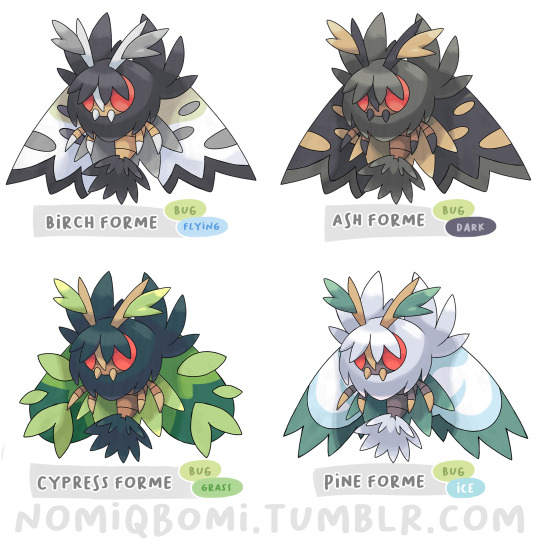
Updated designs for Fophid and Lepignito commissioned by my friend @plus-sizedscribe! Plus a new middle form, Impodster, and 4 distinct formes that Lepignito can take, based on the environment it evolves in.
More info under the tab!
Fophid are timid creatures with many predators. Their carapace has evolved to blend in perfectly with an arboreal environment. When provoked, it wields the branch-like appendage on its abdomen like a lance. It has no venom, it's quite sharp!
Impodster attaches itself firmly to tree limbs, disguising itself as a small branch. Once it has done this, it is impossible to detach until it evolves. (It would be much easier to take the entire branch with it!) It does not budge, even after being discovered. Individuals who have camouflaged themselves poorly can often be found with leaves full of holes, made by bird Pokemon that attempted to carry them away.
When Impodster evolves into Lepignito, it takes on a perfect likeness of its immediate environment. Four unique patternings, based the biomes it occurs in naturally, have been officially recorded; however, it is believed that new patterns could be created by evolving the pokemon in a unique environment.
Even when their immediate environment does not match the markings on their wings, they somehow still manage to obscure themselves from view. Many theories have been pose as to how they are able to do this, but none have been proven, as this behavior is quite difficult to observe.
It prefers to sit motionlessly and evade detection, but when provoked, it uses its stealth to confound opponents and catch them unawares. Once the opponent has become disoriented, it flies off into the shadows, never to be seen again.
---
The line is based on the Peppered Moth, which are a famous example of natural selection that has actually been observed and recorded in real-time. The moth originally evolved to camouflage against lightly-colored trees, but a melanic mutation became more genetically favorable during the industrial revolution, when the trees became blackened with soot. After environmental standards were introduced, the white variant became common again. Today both variations can be found, and they are often mistaken for different species!
Plussized-Scribe helped conceptually with the variations/typing, with his own rom-hack in mind. I may add more variations for my own fan project.
I had originally designed Fophid to camouflage with the forest floor, but during my redesign I found out that the peppered caterpillar camouflages itself as a tree branch. I thought that was neat, to I went with that angle instead.
I also added a middle form to make it a better counterpart for the Pareyeva line who use the opposite form of self defense!
Edit: @plus-sizedscribe wrote some really great Pokedex entries for his hack that he allowed me to share here as well:
"Unlike Sewaddle, the leafy bits Fophid sport are not fashion statements, but specialized organs for camouflage. In autumn, their bodies release chemicals to redden the organs and match the foliage.
The base of the headcrest pulls double duty as a third mandible. Thus, Fophid can chew better while also maintaining camouflage, as the shaking of the crest resembles a leaf trembling in the breeze."
"Having secured themselves on a sturdy tree trunk, Impodster steadfastly await evolution. Very little can dislodge these Pokémon, which are nearly helpless if they happen to end up on the ground.
Impodster with poor camouflage are often found with leaves full of holes. These are made by naïve bird Pokémon attempting to carry them away, only to realize they picked almost the worst prey they could."
"Some people claim to have fallen for a person who always wore a long coat, only for their lover to turn out to be a Lepignito. The veracity of these bizarre anecdotes is suspect, to say the least.
Lepignito live in trees whose bark match their wing patterns. They boast different patterns to blend in with the available types of trees in the regions they inhabit. At least 25 different varieties are known."
#would people like it if i made more comprehensive posts like this of fakemon I've already finished and posted?#I think some consistency would be nice#Pokemon#fakemon#bug type#moth#caterpillar#cocoon#character design#monster design#artists on tumblr#photoshop#digital art#writing#insects#pokemon chartreuse#no offense but ash forme is kind of mothman
740 notes
·
View notes